Notorious for being unskilled hunters, but famous for gracefully aligning with urbanisation over the years - Black Kites. Magnificent birds of prey, in hues of dark rufous-brown, soaring and circling in the thermals over the urban skylines, are often misunderstood for their lesser adaptive counterpart (the eagle).
Found luxuriantly, they survive in almost every habitat other than dense forests and high mountains and prefer to live close to fresh water sources and human settlements. In India especially, they’re accustomed to living in densely populated areas.
Purely carnivores by nature, Black Kites have made a smooth transition from being exclusively raptorial to becoming opportunistic predators and scavengers. They are renowned for swooping down with their legs lowered, to snatch small live prey, ready-to-eat scraps, household refuse, and carrion.
Their flight is quite buoyant and they can glide effortlessly, changing directions easily. This behaviour of theirs is known in British military slang as the 'shite-hawk’. Interestingly, the name ‘kite’ was derived from the English word, “cyta", which was derived from the Aryan root, “skut” meaning to go swiftly or to shoot, referring to the birds’ hovering flight and soaring. Scientifically known as ‘Milvus Migrans’, Black Kites are the most abundant species of Accipitridae.
Speaking of abundance, Black Kites have few to no natural predators and hence tend to live fearlessly. However, as cohabitants with humans, they do fall prey to conditions that arise from human-animal conflicts and several others that are a part and parcel of rapid urbanisation.
BLACK KITES AT RESQ
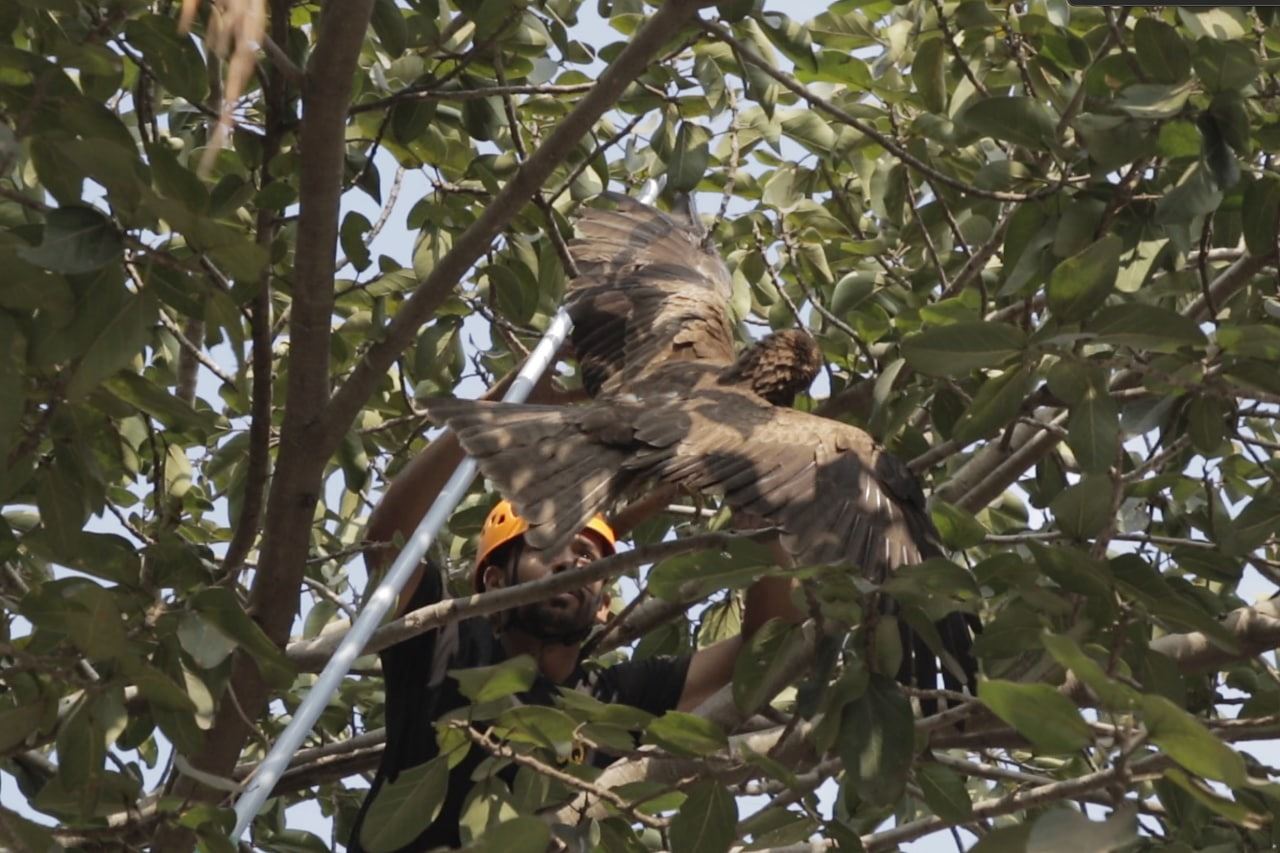
The RESQ Wildlife TTC has been a transit home to over 570 (and counting) Black Kites, that were brought in for treatment and rehabilitation after being rescued from multiple different scenarios. Manja injuries, dehydration, and viral diseases such as Avian Pox to name a few, make it one of the most common species of birds coming into RESQ.
Manja injuries have been a major cause of the suffering of the black kites. Manja is an abrasive, sharp thread used to fly kites. It is usually made of sharp materials or coated with finely crushed glass, metal, and other substances. These strings not only cut through the opponent's kites during competition but also cause near-fatal injuries to animals and humans, especially birds. Sometimes the injuries are minor and a safely conducted rescue results in quick recovery and release of these birds, however, some come severely wounded with damaged wings whose prognosis is often grave. Since 2019, RESQ has treated 101 black kites only for manja injuries.
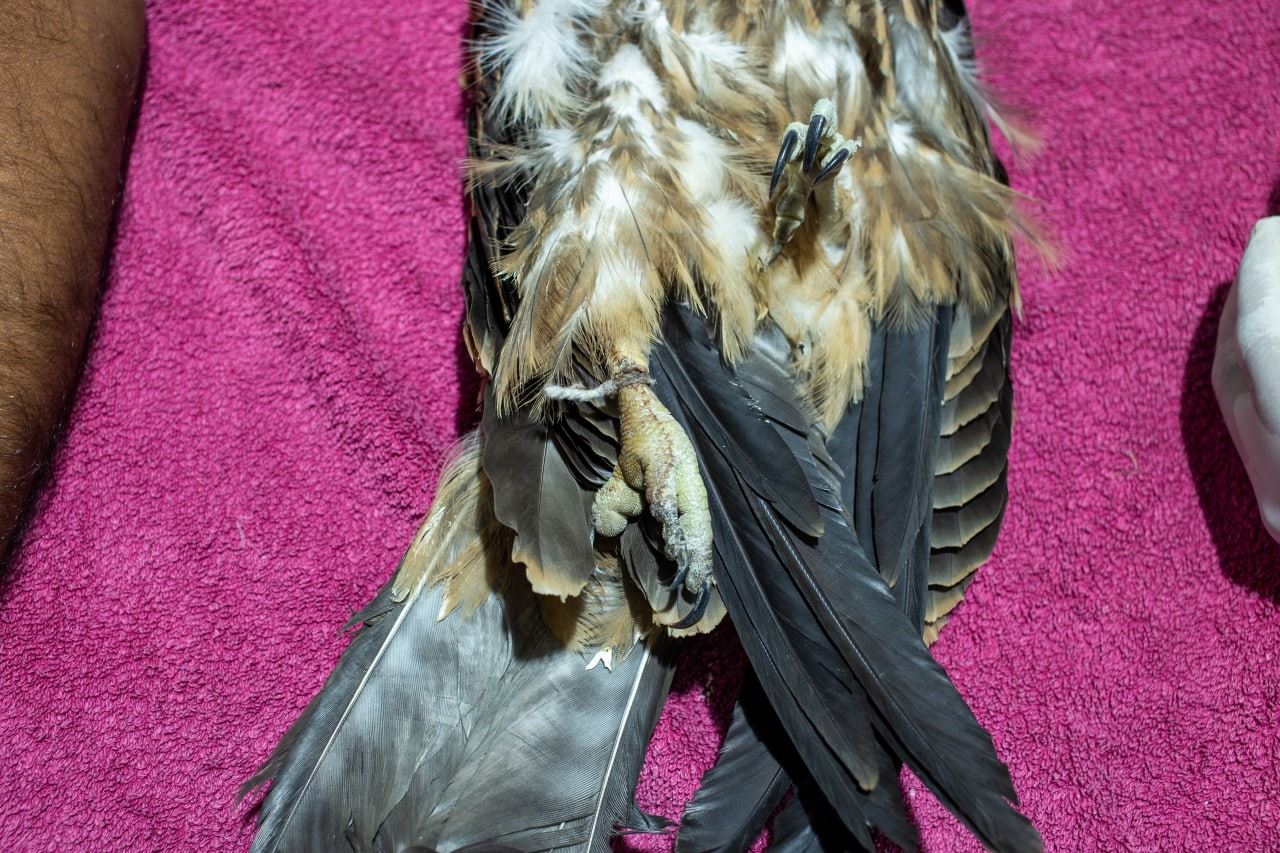
Another major cause of concern, especially in the year 2022, has been sudden or erratic climatic changes, especially recurring heatwaves. 198 kites have been brought in due to severe dehydration and the number seems to be going up every day.
Black Kites also get affected by Avian Pox which is a mild to severe viral infection that is fast-spreading amongst birds. Infected birds that are brought to the centre are kept completely isolated where no resources are shared between infected birds and those recovering from other conditions.
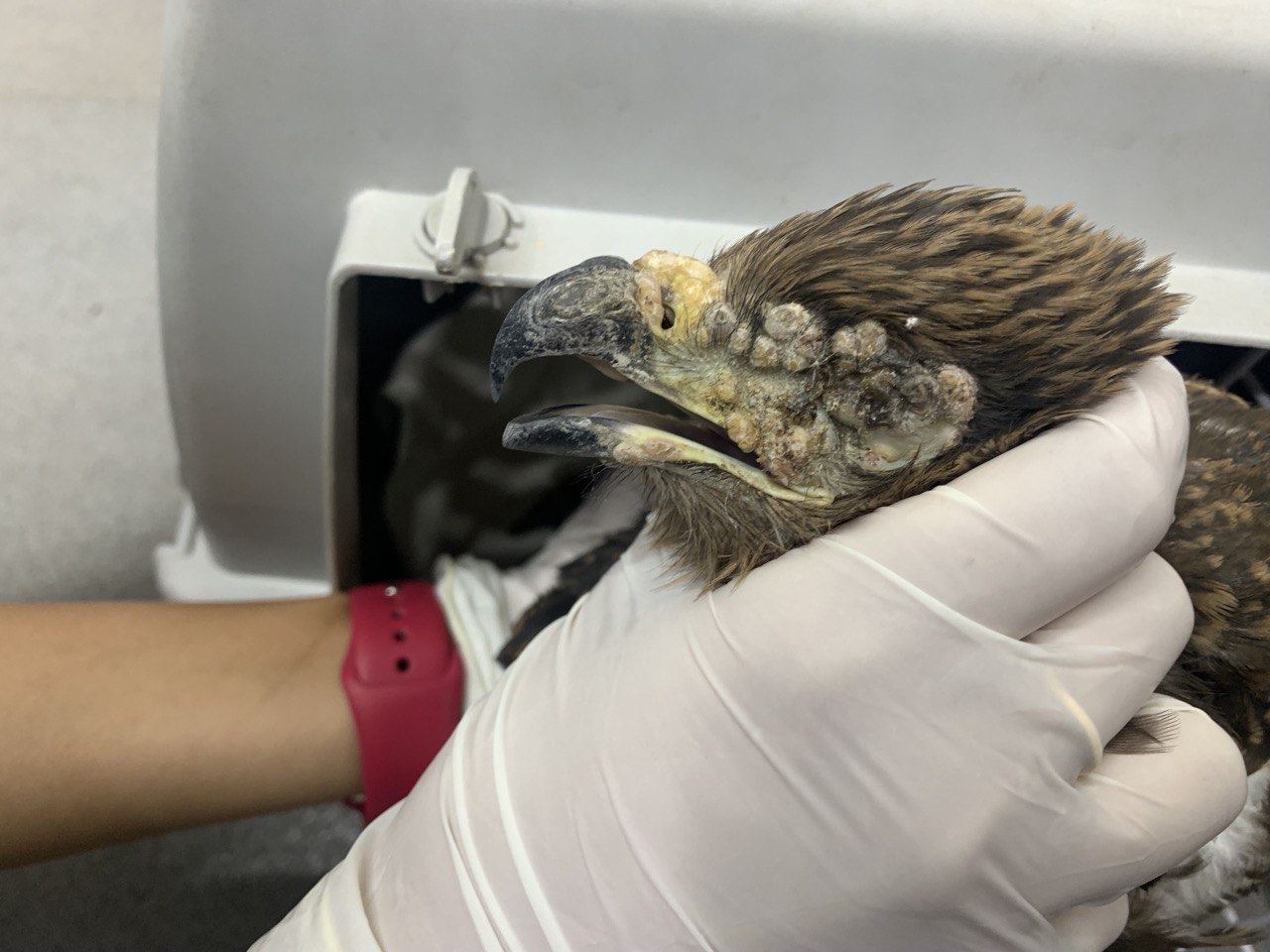
Apart from these three factors, a significant number of black kites, treated at the centre have been victims of natural disasters, electrocution, illegal captivity, injuries such as joint dislocation and fractures, respiratory infection, metabolic bone disorder, gastroenteritis, malnourishment, hypovolemic shock, unknown toxicity, road accidents, trauma, weakness, dog bites, trapped at height, found orphaned and hypothermia.
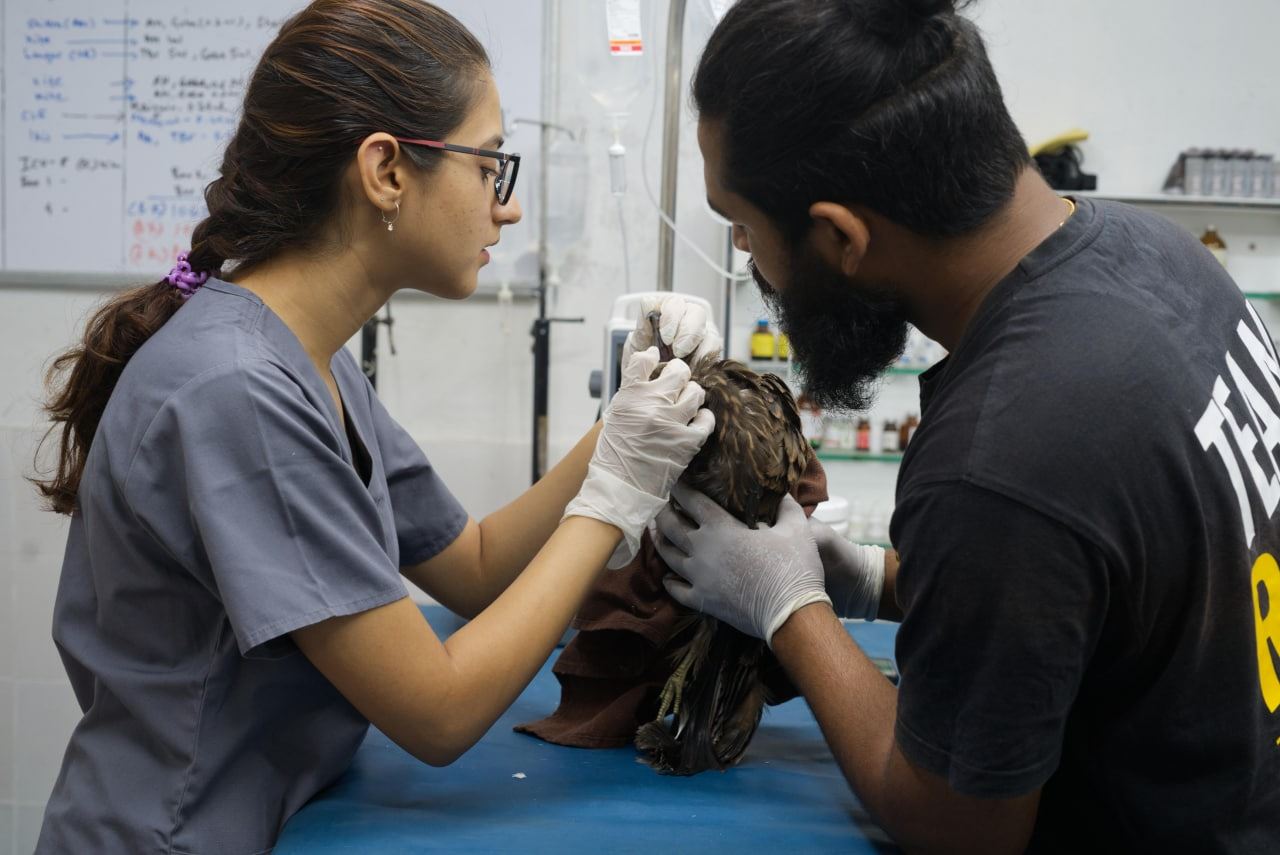
Despite the abundant status of these species, we at RESQ strive tirelessly to treat every black kite that is brought into our premises so that after rehabilitation, they can be released back, into their familiar habitats and can go back to soaring high.
REHABILITATION
Rehabilitation plays an absolutely significant role in the overall well-being of the kites. The enclosures created for them have perched on two to three different levels so that they can gradually make progress with taking flights. Apart from flight tests, self-feeding is another prominent milestone of their rehabilitation procedure. Once they're deemed fit, they're released in the same habitat where they belong, helping them survive due to their familiarity with food and water sources.
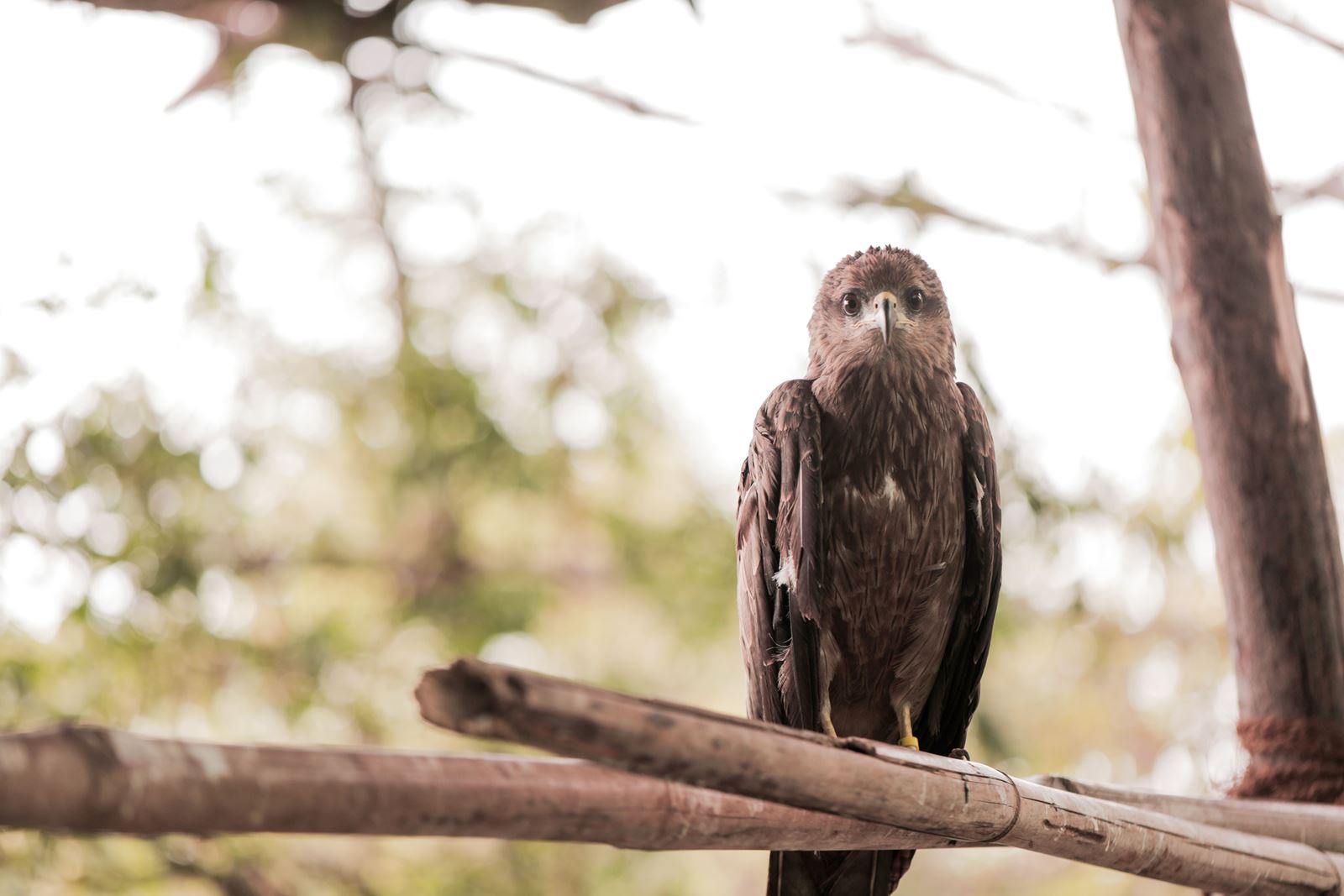
SOME INTERESTING FACTS ABOUT BLACK KITES
- Black kites are migratory birds and are known to migrate across continents. When migrating, these birds have a tendency to form large flocks, particularly prior to crossing over water.
- They are monogamous and form strong bonds that may last for their entire life. Both the males and females take part in nest building, incubation, and care of chicks.
- Black kites are valued for cleaning up and preventing contagions from spreading as they go scavenging on dumpsites and streets preying on carrion, and rodents, squirrels, insects, amphibians, reptiles, etc.
However, sometimes they also tend to cause complications in civic life as they tend to perch on electric wires and become frequent victims of electrocution. Their habit of plunging to pick up food, cause collisions with vehicles and they fall prey to roadkills. They can also cause difficulties at some airports where their size makes them a significant birdstrike hazard.